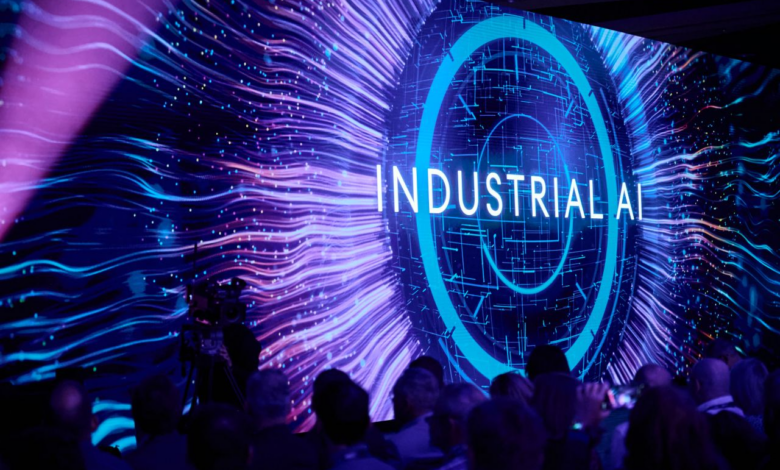
The power of artificial intelligence (AI) lies not in showcasing its potential. It’s about what it can do for you. AI will have most impact as a tool that saves time, enhances efficiency and delivers tangible value to its users – from day one.
AI should solve real problems today, not just present a vision of what will be possible tomorrow. This philosophy drives our approach to AI-driven asset maintenance, particularly in industrial businesses where downtime is a six-figure problem.
Beyond the Hype: AI That Delivers Today
Gartner’s 2024 Hype Cycle for AI confirms what industry leaders already know – Generative AI (GenAI) has moved past the Peak of Inflated Expectations. This year, real value is being derived from AI projects focused on solving tangible business problems. The greatest traction is found in vertical use cases, especially in industrial sectors like manufacturing and logistics, where efficiency is king. This is where AI is already making a difference.
One of the most pressing challenges for industrial businesses is mean time to repair (MTTR). The numbers are staggering. The average hourly cost of downtime often exceeds $250,000. AI can address both, by driving faster repairs and less downtime. AI offers a direct path to reducing these figures, improving maintenance operations, and ultimately driving profitability.
The primary reason for a prolonged MTTR is the lack of detail in a failure report. For example, a failure report could be as vague as ‘pump failure, please fix’. The operators are often the first to observe and report an issue. They know how the machines are supposed to look, sound, smell and feel, yet these sensory observations are often not included in the failure report.
Large language models (LLMs) can assist by suggesting those sensory observations to the reporter. The engineer can then simply click to choose the appropriate suggestions and attach them to the report. As a result, maintenance teams are provided with complete and accurate information to quickly solve the issue and increase asset availability and reliability. All of these features are available from within Ultimo and use generally available GPTs. Organizations do not have to invest money in AI technology or spend time training their own models.
There’s a lot of value in this AI use case when we consider the cost of downtime. The average manufacturing plant has around 15-20 hours of downtime a week. Even a 5-10 percent reduction will save £millions.
This AI use case will be expanded to make suggestions for how the issue should be resolved, and once the issue has been fixed, capture completed work activities. This enhances work order history data and provides valuable insights for future occurrences of similar failures.
AI That Moves the Needle
An AI-driven approach to asset management delivers immediate and measurable impact. Time is money, especially in manufacturing. Reducing MTTR means ensuring maintenance teams spend less time troubleshooting and more time fixing. AI-powered diagnostics help identify problems faster, shaving hours off the repair cycle. The result? A significant reduction in costly downtime and a more efficient workforce.
In industrial environments, uptime isn’t just a metric – it’s the backbone of operations. The higher an asset’s availability, the more value it generates. AI-driven maintenance ensures that assets stay operational longer, minimizing disruptions and maximizing productivity. A well-maintained asset isn’t just running, it’s running at peak efficiency.
AI doesn’t just speed up repairs; it enhances the entire maintenance ecosystem by improving the quality of business-critical data. Business intelligence (BI), predictive maintenance, and prescriptive analytics all depend on one fundamental element: accurate data. AI refines data collection, ensuring that organizations have a rock-solid foundation for strategic decision-making. High-quality data powers everything from performance dashboards to KPI tracking, making AI the ultimate enabler of smarter asset management.
Labor shortages continue to challenge industrial sectors, making efficiency a top priority. By improving failure reporting and automating administrative tasks, AI can allow skilled workers to spend less time doing admin, and more time on what they do best: solving problems. The impact extends beyond efficiency: reducing admin work enhances job satisfaction, helping businesses retain talent in an industry where skilled labour is at a premium.
The future of AI in business isn’t about showcasing technology, it’s about empowering users. Meaningful AI applications offer more than cost savings; they optimize efficiency, enhance employee satisfaction, and ensure businesses run smarter, not harder.
So, the imperative is not just about building AI tools. You need AI tools that work. By keeping the customer at the core, we ensure that every innovation is a step toward a more productive, intelligent, and profitable future. The real measure of AI success isn’t in algorithms, it’s in the value it delivers from day one.
Many modern AI technologies are geared towards predicting and preventing failures and incidents. However, for most organisations, these technologies are more of a long-term goal than a short-term reality. Reactive maintenance will continue to feature prominently in most organizations’ maintenance strategies. With this in mind, we must harness the powers of AI to significantly reduce time spent on reactive maintenance. Realizing these short-term benefits starting today puts long-term objectives within arm’s reach.




